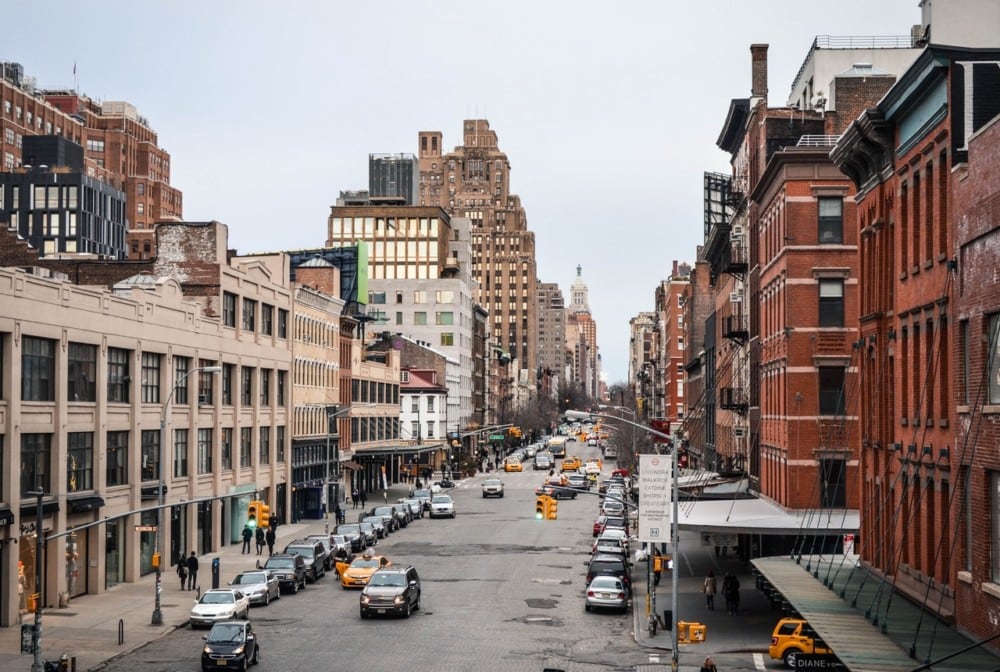Table of Contents Show
If you want to mingle with New York’s most glamorous, you’ll inevitably end up in the Meatpacking District. Once a hub for the city’s butchers, meat purveyors, and lumberyards, the neighborhood is now one of the most upscale –– in both price and feel –– that you’ll find in Manhattan.
The areas start on the south end at Gansevoort Street (some say Horatio) and stretch north to West 14th (to some, West 16th or Chelsea Market). The east/west border typically begins at Hudson Street (some say farther east) and goes to the Hudson River.
Table of Contents
The neighborhoodThe neighborhood
Gentrification began in the 1960s and ‘70s with the opening of underground nightclubs and leather shops geared toward a gay clientele. By the 1980s, the neighborhood began to take on a new face with the opening of Florent (now closed), followed by Keith McNally’s Pastis (also closed), and at last the famous Gansevoort Hotel, at which you can find a scene of fashion-forward lovelies, consummate foodies, and party revelers.
Today, the Meatpacking District maintains a few of those rough-hewn edges here and there with faces of meat lockers still intact and a handful of meatpackers, but the area is a lot posher than its early days. You’ll find new condo buildings along the borders, but much of the neighborhood remains commercial, so residential space is limited.
What to doWhat to do
The High Line –– a 1.45-acre elevated park created on a defunct freight rail line –– runs directly through the neighborhood. The public garden offers great views of the city as well as an unusual setting for walking, reading, or sipping coffee. From the High Line, you’ll see the new home of the Whitney Museum at 99 Gansevoort Street. The Whitney focuses on twentieth-century American art, with most of its collection by living artists.
Luxury shopping is widely available in this part of town. You’ll come across boutiques such as Dianne von Furstenberg, Efva Attling, Jeffrey, Scoop, Warby Parker, and many more. Chelsea Market is an indoor emporium for foodstuffs and wine, as well as a home for shops like Artists & Fleas, Anthropologie, Posman Books, among others.
There’s no shortage of great restaurants and bars in the Meatpacking District. For Italian, try Scarpetta, and if Asian is what you’re craving, don’t forget Buddakan. Other foodie spots include Colicchio & Sons, the Standard Grill, and Catch.
Wear your dancing shoes in nightclubs like HILO and Le Bain, and if you’re more into lounging, try Soho House and feel super cool.
TransportationTransportation
The A/C/E trains run to 14th Street and Eighth Avenue. Farther east at 7th Avenue, beyond the neighborhood’s borders, you can catch the 1/2/3 trains as well. The L train runs east/west with a stop at 14th and Eighth. The M14 buses also run crosstown on 14th Street.
What it costsWhat it costs
The building 345 West 14th was built in 1960 and converted into luxury condos. Previous sale prices ranged from $2,200 to $2,600 per square foot or an average of about $2.8 million. Renting or buying in West Chelsea or the West Village is more probable since apartment inventory is scarce in the Meatpacking District itself. In West Chelsea, expect to pay between $1 million and $2 million for a one-bedroom condo. Smaller co-ops can be had for less. Expect to pay about $600,000 for a small one-bedroom or a studio. Larger apartments with multiple bedrooms and baths will start in the $3 or $4 million range and go up from there.

